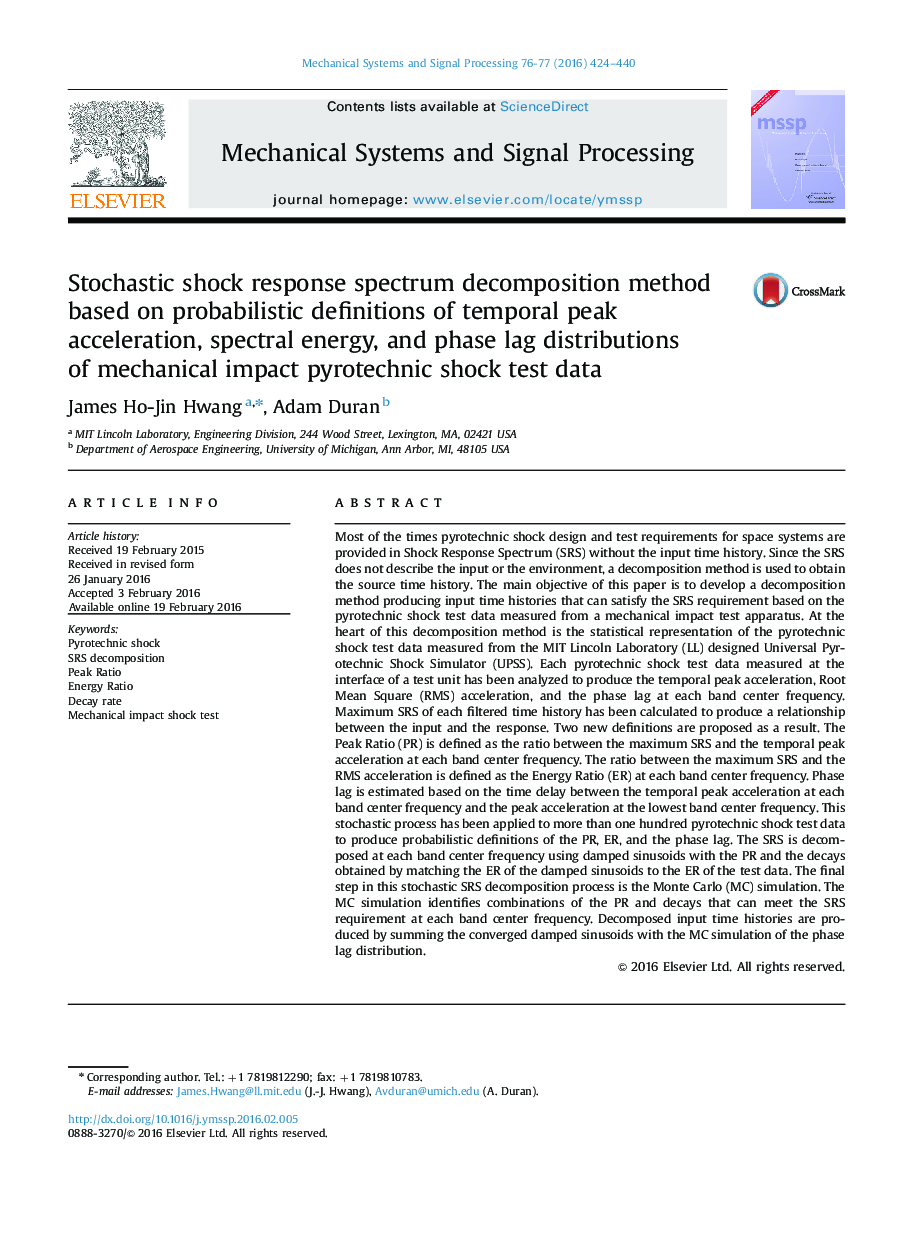| کد مقاله | کد نشریه | سال انتشار | مقاله انگلیسی | نسخه تمام متن |
|---|---|---|---|---|
| 6955174 | 1451855 | 2016 | 17 صفحه PDF | دانلود رایگان |
عنوان انگلیسی مقاله ISI
Stochastic shock response spectrum decomposition method based on probabilistic definitions of temporal peak acceleration, spectral energy, and phase lag distributions of mechanical impact pyrotechnic shock test data
ترجمه فارسی عنوان
بر اساس تعریف احتمالی شتاب های زمانی، انرژی طیفی و توزیع های تأخیر فاز از داده های آزمون شوک پیراهن اثرات مکانیکی
دانلود مقاله + سفارش ترجمه
دانلود مقاله ISI انگلیسی
رایگان برای ایرانیان
کلمات کلیدی
موضوعات مرتبط
مهندسی و علوم پایه
مهندسی کامپیوتر
پردازش سیگنال
چکیده انگلیسی
Most of the times pyrotechnic shock design and test requirements for space systems are provided in Shock Response Spectrum (SRS) without the input time history. Since the SRS does not describe the input or the environment, a decomposition method is used to obtain the source time history. The main objective of this paper is to develop a decomposition method producing input time histories that can satisfy the SRS requirement based on the pyrotechnic shock test data measured from a mechanical impact test apparatus. At the heart of this decomposition method is the statistical representation of the pyrotechnic shock test data measured from the MIT Lincoln Laboratory (LL) designed Universal Pyrotechnic Shock Simulator (UPSS). Each pyrotechnic shock test data measured at the interface of a test unit has been analyzed to produce the temporal peak acceleration, Root Mean Square (RMS) acceleration, and the phase lag at each band center frequency. Maximum SRS of each filtered time history has been calculated to produce a relationship between the input and the response. Two new definitions are proposed as a result. The Peak Ratio (PR) is defined as the ratio between the maximum SRS and the temporal peak acceleration at each band center frequency. The ratio between the maximum SRS and the RMS acceleration is defined as the Energy Ratio (ER) at each band center frequency. Phase lag is estimated based on the time delay between the temporal peak acceleration at each band center frequency and the peak acceleration at the lowest band center frequency. This stochastic process has been applied to more than one hundred pyrotechnic shock test data to produce probabilistic definitions of the PR, ER, and the phase lag. The SRS is decomposed at each band center frequency using damped sinusoids with the PR and the decays obtained by matching the ER of the damped sinusoids to the ER of the test data. The final step in this stochastic SRS decomposition process is the Monte Carlo (MC) simulation. The MC simulation identifies combinations of the PR and decays that can meet the SRS requirement at each band center frequency. Decomposed input time histories are produced by summing the converged damped sinusoids with the MC simulation of the phase lag distribution.
ناشر
Database: Elsevier - ScienceDirect (ساینس دایرکت)
Journal: Mechanical Systems and Signal Processing - Volumes 76â77, August 2016, Pages 424-440
Journal: Mechanical Systems and Signal Processing - Volumes 76â77, August 2016, Pages 424-440
نویسندگان
James Ho-Jin Hwang, Adam Duran,
